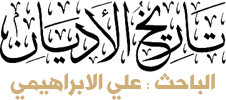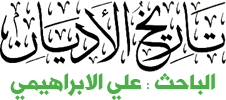مشروع الوحدة بين ( الحوزة العلمية الدينية ) والجامعة
university
لقراءة أسباب الانفصال وواقع الانعزال والمستقبل المأمول بين المؤسسة التي تُعنى بدراسة العلوم الاسلامية والمصطلح عليها ب ( الحوزة العلمية الدينية ) وبين المؤسسة التي اخذتْ على عاتقها تدريس العلوم الحديثة وهي الجامعة نأخذ التجربة الإيرانية كنموذج لتلك القراءة .
ففي حين كانت العلوم الدينية والطبيعية تُدرس في مراكز علمية واحدة في عصور الازدهار الحضاري الاسلامي وقد تخرج منها جهابذة العلم من أمثال ( نصير الدين الطوسي ) و ( البيروني ) وغيرهم حدث لاحقاً ان تم إهمال العلوم الطبيعية من قبل ( الحوزة العلمية الدينية ) ، سوى بعض الأبحاث المتعلقة بالمادة الفقهية نفسها كالرياضيات ، ليشهد القرنان الأخيران – مع موجة العَلْمَنة المفروضة سياسياً – انفصال وانعزال العلوم الطبيعية في معاهد خاصة تقصي العلوم الدينية تماماً . لتكون النتيجة المباشرة لهذا الانفصال اقرب الى الخصومة في كثير من الأحيان ، حيث أراد كل طرف إثبات اشرفيته على الطرف الاخر ، فكان من الطبيعي ظهور جهتين مجتمعيتين متطرفتين ، احداهما تريد إثبات ان القران الكريم والسنة الشريفة تضمّنتا جميع أسس العلوم الحديثة ، ولذلك تمت كتابة تفاسير للقران مبنية على أسس العلوم الطبيعية ، فيما كانت الاخرى تعيش رد الفعل السلبي ضد موقف بعض رجال الدين من العلم الحديث فاختارت الابتعاد التام عنه .
ولأننا نعلم حجم الخسارة الناشئة عن هذا الانفصال ونعلم كذلك بان هناك فهماً خاطئاً للمساحة بين المؤسستين وفهماً سيئاً لدور المؤسستين فكان من اللازم إيجاد مشروع يعيد المجرى المشترك للدماء بينهما ، وهو ما عمل عليه أمثال الدكتور ( مهدي كلشني ) في مؤلّفه ” من العلم العلماني الى العلم الديني ” .


ولكن ما هو المقصود ب ” الوحدة ” بين ( الحوزة العلمية الدينية) والجامعة ؟ ، هنا يمكن استعراض جملة من الرؤى المتعلقة بهذا الامر ، فهناك من يريد اضافة شيء من المقررات الدينية الى الدراسات الجامعية ، وهو امر يجده جيداً لكنّه غير كافٍ بنظره ، وهناك من يريد ل ( الحوزة العلمية الدينية ) ان تستوعب كافة العلوم الحديثة وللجامعة ان تستوعب كافة العلوم الدينية ، وهو الامر الذي يمكن عده مجازفة فكرية كبيرة ، فليس من الممكن اليوم الإحاطة بشعبة من شعب العلم بعد تشعبه وتخصصه ، وثمة من يرى ان على ( الحوزة العلمية الدينية ) والجامعة أخذ الخصائص الحسنة لكل جهة عن الاخرى ، وهو من الأمور الحسنة لكن غير الكافية ، ومن الأمور المقترحة والتي تقع في القائمة الجيدة وغير الكافية ايضاً مقترح اخر يرى ان الوحدة السياسية والاجتماعية بين الحوزة والجامعة هي المطلوبة ، بمعنى ملاحظة الجانب العملي ، وإعداد استراتيجية تنموية وتطويرية وإصلاحية مشتركة ، فيما يرى اخرون ضرورة رفع مبدأ القداسة عن الحوزة لترك انطباع جيد لدى المؤسسة الجامعية لتسير بخطوات نحو الدين من خلال إقرار كل منهما بعلمية ما يطرحه الاخر .
لكنّ الوحدة التي يراها متخصصون في الجانبين الطبيعي والديني بين المؤسستين هي تلك التي تكون في أهدافهما الإلهية المشتركة ، أي بمعنى ان يصبح هدف المؤسستين الهياً ، اي يتولى كل منهما إعداد كوادر تهدف بشكل أساسي الى تحقيق القرب من الله عز وجل وتسعى في هذا الإطار الى خدمة المجتمع الاسلامي وتعمل على رفعته وتقدمه . وبذلك سيمكن مواجهة التحديات برؤية واحدة .
ان شكل الوحدة المطلوبة بين المؤسستين يتم من خلال تحقيق الروح التي كانت تدفع الأجيال الاولى للمسلمين نحو العلم ، بخلاف الذين يريدون تحقيق ذات المسلك العملي للأجيال العلمية الاولى التي لا يمكن عودتها في ظل تعقد وتشعب العلم الحديث .
وفي مسألة مهمة يجب ان نلاحظ واقع قضية خضوع الجامعات لتأثيرات استيراد النظريات والمناهج العلمية من الغرب العلماني ، كما ان المشروع العملي لتلك الجامعات يكون غالباً محصوراً في الانشغال بالحاجة الوطنية وتلبيتها . كما ان المعاهد الدينية غالباً تنشغل – في نظر بعض الباحثين – بعلومها الخاصة بعيداً عن الحاجات الملموسة للمجتمع . ولان الجامعات – تأثراً بواقعها العلماني المستورد – لا ترى الحاجة الى الدين فيلزم على ( الحوزة العلمية الدينية ) ان تكون هي البادئة في السير نحو الوحدة مع الجامعة لكسر الحواجز المصطنعة .
وعن ماهية تلك البداية التي على الحوزات التحرك فيها يجب بيان خطورة ابتعاد الدين عن الحركة العلمية الجامعية، فبحسب ( السيد الخميني ) ان كل وسائل الدمار التي تُستخدم في المجال العسكري كان ورائها اساتذة وعلماء تخرجوا من الجامعات ، لكن دون وجود ضابط اخلاقي ينظم ادائهم في مسيرتهم العملية ، لذلك تتضاعف المسؤولية على الحوزة للعب الدور الأولي في هذا المجال نحو الجامعة . من هنا نجد ضرورة ان تساهم ( الحوزات العلمية الدينية ) بتنمية المستوى الاخلاقي داخل الجامعات ، لكن ليس من خلال الايمان الصوري الخالي من المعرفة ، بل هو الايمان الذي يجد لذة المعرفة والذي يأتي في لحظات الوعي ، وهي التفاتة مهمة تحتاج الى كوادر دينية كبيرة وعظيمة النفس كالشهيد ( مرتضى مطهري ) ، لا تلك النماذج التطبيقية السيئة للدين في بعض الجامعات ، والتي جاءت بنتائج عكسية بسبب اعتمادها الصورة الشكلية للدين . فهناك من التطبيقات ما اشتمل على مباحث إسلامية فلسفية يفتقر الطلاب الجامعيون الى مقدمات فهمها . لذلك من الضروري تعليم اساسيات التعلم في الاسلام والأدبيات المتحدثة عن أهمية العلم ، بمعنى فلسفة العلم في الاسلام ، كما هي ضرورة اطلاع طلبة الجامعات على أسس الاستنباط الفقهي والمناهج التفسيرية في ( الحوزات العلمية الدينية ) ليعوا مستوى التعقيد العلمي فيها ولا يتعاملوا معها بنحو السذاجة .
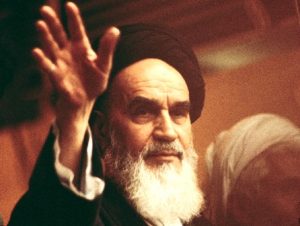
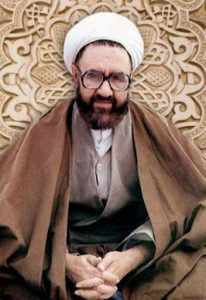
وهناك حاجة ملحة للمناهج الدينية التي ينبغي تدريسها في الجامعات وتكون بصورة مناسبة لروح العصر والواقع ، كما ان ( الحوزة العلمية الدينية ) ملزمة بإدخال بعض المقررات العلمية الحديثة في جامعاتها ومعاهدها ، وليس الاقتصار وفي احيان قليلة ايضاً على مناهج تراثية قديمة ، وهو الامر الذي رأينا تطبيقاً له في ( جامعة الصدر الدينية ) في العراق ، ومن تلك المناهج ما كتبه ( الشيخ محمد اليعقوبي ) بعنوان ” الرياضيات للفقيه ” .
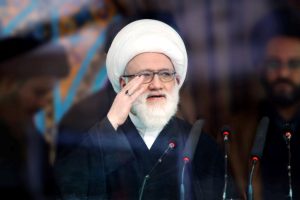
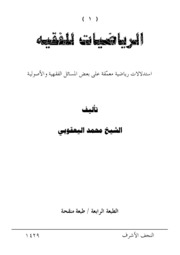
ومن الامور التي يجب ان تؤخذ بنظر الاعتبار ظاهرة رد الفعل الانفعالي من المؤسسة الدينية الاسلامية تجاه ظاهرة الغزو الثقافي ، فيما ان المؤسسة الدينية للنصارى راحت تعمل على زج رجال الدين في مختلف الاختصاصات العلمية الحديثة لمواجهة تلك الظاهرة بسلاح العلم .
ولعل الجانب الاخر هو تأثر بعض رجال الدين بالترجمات المؤدلجة للنصوص العلمية والإنسانية الغربية ، دون وجود مشروع موازٍ لتلك الترجمات ، او وجود مشروع يستعرض الارث الثقافي الاسلامي العميق ، كما ان هؤلاء المتأثرين لم يحاولوا الاطلاع على الجديد من النظريات العلمية في الغرب بصورة مباشرة ، بمعنى افتقاد المجتمع الاسلامي لمشروع يعالج أدلجة المادة العلمية .
فيما يكون لدور الطلبة والأساتذة في الجامعات أهمية كبرى اذا ما كانوا متدينين ، حيث يمكن للطلبة الوقوف بوجه مظاهر الانحراف في الوسط الجامعي بأسلوب واع وقوي ، كما يمكنهم ان يكونوا مثالاً يُحتذى من خلال سيرتهم العملية وعرض المثال الاسلامي ” كونوا لنا دعاة صامتين ” ، في الوقت الذي يستطيع الأساتذة إيجاد المعادل الاسلامي للمادة العلمية المستوردة ، وكذلك يكون لتواجدهم في الوسط ( الحوزوي العلمي الديني ) الأثر الأهم في خلق المساحة المشتركة بين المؤسستين .
ان استمرار فصل الحوزة العلمية عن الجامعة يعني في ذهن الشاب المسلم فصل الدين عن العلم ، لذلك لابد من ازالة عوامل الفصل هذه ليعود العلم والدين كياناً واحداً ، ويوصي بعض الباحثين لتحقيق هذا الامر مجموعة من التوصيات ، منها:
- تأليف كتب عن المعارف الاسلامية تتناسب وطرحها كمادة جامعية
- تدريس العلوم المحضة كالفيزياء والعلوم الانسانية كالاقتصاد في ( الحوزات العلمية الدينية ) والمعاهد الدينية كمادة تخصصية
- العمل على نشر الأخلاق العلمية والتربوية للعلماء المسلمين الأوائل وحث طلبة الجامعات و ( الحوزات العلمية الدينية ) للتحلي بها في سبيل تطويع العلم لخدمة الأمة
- تأسيس معاهد البحوث والدراسات المشتركة بين ( الحوزة العلمية الدينية ) والجامعة ، واعتراف كل طرف بالآخر .
ويمكننا القول ان الكثير من هذه التوصيات التي يراد لها ان تكون عاملاً لنجاح تجربة الوحدة تتم حالياً في جمهورية ايران الاسلامية بوجود برنامج ورغبة رسمية ونخبوية هناك، وكذلك في العراق في إطار مرجعية دينية مؤمنة بهذا المنهج وذات خبرة في التعامل معه – رغم صعوبة الظرف والمحيط – هي مرجعية ( الشيخ محمد موسى اليعقوبي ) .
****
Unity project between (the religious seminary) and the university
To read the reasons for separation, the reality of isolation, and the hoped-for future between the institution concerned with the study of Islamic sciences and the term “religious seminary” and between the institution that took upon itself the teaching of modern sciences, which is the university, we take the Iranian experience as a model for that reading.
While the religious and natural sciences were taught in the same scientific centers during the periods of Islamic civilization prosperity, and such geniuses as Nasir al-Din al-Tusi, al-Biruni and others graduated from them, it later happened that the natural sciences were neglected by the Religious Seminary, except for some Research related to the same jurisprudential subject as mathematics, so that the last two centuries witnessed – with the politically imposed wave of secularization – the separation and isolation of the natural sciences in private institutes that completely exclude religious sciences. The direct result of this separation is often closer to antagonism, as each party wanted to prove its honor over the other, so it was natural for two extremist societal sides to emerge, one of which wanted to prove that the Holy Qur’an and the honorable Sunnah included all the foundations of modern science, and therefore interpretations of the Qur’an were written. It was based on the foundations of natural sciences, while others were experiencing a negative reaction against the position of some clerics on modern science, so they chose to stay away from it completely.
And because we know the magnitude of the loss resulting from this separation, and we also know that there is a wrong understanding of the space between the two institutions and a bad understanding of the role of the two institutions, so it was necessary to find a project that restores the common course of blood between them, which is what the likes of Dr. (Mahdi Kalashni) worked on in his book “From Secular to Science” religious”.
But what is meant by “unity” between the (religious seminary) and the university? Here, a number of visions related to this matter can be reviewed. There are those who want to add some religious courses to university studies, which they find good but not sufficient in their view, and there are those who want the (religious seminary) to absorb all modern sciences and the university to absorb all Religious sciences, which is a matter that can be considered a great intellectual risk, as it is not possible today to encompass a branch of science after its branching and specialization. Sufficient, and among the things proposed, which fall on the good and insufficient list, is also another proposal that sees the political and social unity between the seminary and the university is what is required, in the sense of observing the practical aspect, and preparing a joint developmental and reform strategy, while others see the need to raise the principle of holiness from the estate to leave a good impression. The university institution has to take steps towards religion by acknowledging the scientificity of what the other proposes.
But the unity that specialists in the natural and religious aspects between the two institutions see is that which is in their common divine goals, meaning that the goal of the two institutions becomes divine, meaning that each of them undertakes the preparation of cadres that aim primarily to achieve closeness to God Almighty and seek in this context to serve The Islamic community is working to raise and advance it. Thus, it will be possible to meet the challenges with a single vision.
The form of unity required between the two institutions is achieved through the realization of the spirit that was pushing the first generations of Muslims towards science, unlike those who want to achieve the same practical course of the first scientific generations that cannot be returned in light of the complexity and complexity of modern science.
On an important issue, we must note the reality of the issue of universities being subject to the effects of importing scientific theories and curricula from the secular West, just as the practical project of these universities is often limited to preoccupation with the national need and meeting it. Also, religious institutes are often preoccupied – in the view of some researchers – with their own sciences, away from the concrete needs of society. And because universities – influenced by their imported secular reality – do not see the need for religion, it is necessary for the (religious seminary) to be the initiator in the march towards unity with the university to break the artificial barriers.
And about the nature of that beginning in which the seminaries must move, it must be explained the danger of the religion’s distance from the university scientific movement, according to (Sayyed Khomeini) that all the means of destruction that are used in the military field were behind professors and scholars who graduated from universities, but without the presence of a moral officer regulating their performance in their path process, so the responsibility of the estate is doubled to play the primary role in this field towards the university. Hence, we find the necessity for (religious seminaries) to contribute to the development of the moral level within universities, but not through formal faith that is devoid of knowledge. Like the martyr (Mortada Motahari), not those bad applied models of religion in some universities, which had counterproductive results because of their adoption of the formal form of religion. There are some applications that include Islamic philosophical studies that university students lack introductions to understand. Therefore, it is necessary to teach the basics of learning in Islam and the literature that talks about the importance of science, meaning the philosophy of science in Islam, as it is the need to inform university students of the foundations of jurisprudential deduction and explanatory methods in (religious seminaries) to be aware of the level of scientific complexity in them and not deal with them in a naive manner.
There is an urgent need for religious curricula that should be taught in universities and in a manner appropriate to the spirit of the age and reality, and the (religious seminary) is obliged to introduce some modern scientific courses in its universities and institutes, and not be limited, in a few cases also, to old heritage curricula, which we saw application He has it in (Al-Sadr Religious University) in Iraq, and among those curricula is what he wrote (Sheikh Muhammad Al-Yaqoubi) entitled “Mathematics for the Faqih”.
One of the things that must be taken into consideration is the phenomenon of the emotional reaction of the Islamic religious establishment towards the phenomenon of cultural invasion, while the religious establishment of the Christians has been working to involve the clergy in various modern scientific disciplines to confront this phenomenon with the weapon of science.
Perhaps the other side is the influence of some clerics on the ideological translations of Western scientific and human texts, without a parallel project to those translations, or the existence of a project that reviews the deep Islamic cultural heritage, and those affected did not try to see the new scientific theories in the West directly, meaning a lack of The Islamic community for a project that addresses the ideological ideological scientific material.
While the role of students and professors in universities is of great importance if they are religious, students can stand against the manifestations of deviation in the university environment in a conscious and strong manner, and they can be an example to be emulated through their practical career and presentation of the Islamic example “Be for us silent advocates,” at the same time. The professors can find the Islamic equivalent of the imported scientific subject, and their presence in the center (the religious scholarly seminary) will also have the most important impact in creating the common space between the two institutions.
The continuation of separating the seminary from the university means, in the mind of the young Muslim, the separation of religion from science, so these factors of separation must be removed so that science and religion return to one entity, and some researchers recommend to achieve this a set of recommendations, including:
– Writing books on Islamic knowledge appropriate to present it as a university subject
– Teaching pure sciences such as physics and human sciences such as economics in (religious seminaries) and religious institutes as a specialized subject
– Working to spread the scientific and educational ethics of the early Muslim scholars and urging university students and (religious seminaries) to adopt them in order to adapt science to serve the nation
– Establishing joint research and studies institutes between (the religious seminary) and the university, and the recognition of each other by the other.
We can say that many of these recommendations, which are intended to be a factor for the success of the experience of unity, are currently taking place in the Islamic Republic of Iran with the presence of an official and elite program and desire there, as well as in Iraq within the framework of a religious reference that believes in this approach and has experience in dealing with it – despite the difficult circumstance and environment – It is a reference (Sheikh Muhammad Musa Al-Yaqoubi).
Note: Machine translation may be inaccurate
Projet d’unité entre (le séminaire religieux) et l’université
A lire les raisons de la séparation, la réalité de l’isolement, et l’avenir espéré entre l’institution concernée par l’étude des sciences islamiques et le terme « séminaire religieux » et entre l’institution qui s’est chargée de l’enseignement des sciences modernes, qui est l’université, nous prenons l’expérience iranienne comme modèle pour cette lecture.
Alors que les sciences religieuses et naturelles étaient enseignées dans les mêmes centres scientifiques pendant les périodes de prospérité de la civilisation islamique et que des génies tels que Nasir al-Din al-Tusi, al-Biruni et d’autres en sortaient diplômés, il est arrivé plus tard que les sciences naturelles étaient délaissés par le Séminaire religieux, à l’exception de quelques recherches liées au même sujet jurisprudentiel que les mathématiques, de sorte que les deux derniers siècles ont vu – avec la vague de sécularisation politiquement imposée – la séparation et l’isolement des sciences naturelles dans des instituts privés qui excluent complètement les les sciences. Le résultat direct de cette séparation est souvent plus proche de l’antagonisme, car chaque partie voulait prouver son honneur sur l’autre, il était donc naturel que deux côtés extrémistes de la société émergent, dont l’un voulait prouver que le Saint Coran et le honorable Sunna incluait tous les fondements de la science moderne, et c’est pourquoi des interprétations du Coran ont été écrites. Il était basé sur les fondements des sciences naturelles, tandis que d’autres subissaient une réaction négative contre la position de certains clercs sur la science moderne, alors ils choisi de s’en éloigner complètement.
Et parce que nous connaissons l’ampleur de la perte résultant de cette séparation, et nous savons aussi qu’il y a une mauvaise compréhension de l’espace entre les deux institutions et une mauvaise compréhension du rôle des deux institutions, il a donc fallu trouver un projet qui restaure le cours commun du sang entre eux, ce sur quoi des gens comme le Dr (Mahdi Kalashni) ont travaillé dans son livre « Du séculier à la science » religieux ».
Mais qu’entend-on par « unité » entre le (séminaire religieux) et l’université ? Ici, un certain nombre de visions liées à cette question peuvent être examinées. Il y a ceux qui veulent ajouter des cours de religion aux études universitaires, qu’ils trouvent bons mais insuffisants à leurs yeux, et il y a ceux qui veulent le (séminaire religieux) absorber toutes les sciences modernes et l’université absorber toutes les sciences religieuses, ce qui peut être considéré comme un grand risque intellectuel, car il n’est pas possible aujourd’hui d’englober une branche de la science après sa ramification et sa spécialisation. choses proposées, qui tombent sur la liste bonne et insuffisante, est aussi une autre proposition qui voit l’unité politique et sociale entre le séminaire et l’université est ce qui est nécessaire, dans le sens d’observer l’aspect pratique, et de préparer un développement et une réforme communs stratégie, tandis que d’autres voient la nécessité d’élever le principe de sainteté de la succession pour laisser une bonne impression.L’institution universitaire doit faire des pas vers la religion en reconnaissant la scientificité de ce que l’autre propose.
Mais l’unité que voient les spécialistes des aspects naturels et religieux entre les deux institutions est celle qui est dans leurs buts divins communs, c’est-à-dire que le but des deux institutions devient divin, c’est-à-dire que chacune d’elles entreprend la préparation de cadres qui visent principalement se rapprocher de Dieu Tout-Puissant et chercher dans ce contexte à servir La communauté islamique s’emploie à l’élever et à le faire progresser. Ainsi, il sera possible de relever les défis avec une vision unique.
La forme de l’unité requise entre les deux institutions passe par la réalisation de l’esprit qui poussait les premières générations de musulmans vers la science, à la différence de ceux qui veulent réaliser le même parcours pratique des premières générations scientifiques qui ne peut être rendu à la lumière de la complexité et de la complexité de la science moderne.
Sur une question importante, il faut noter la réalité de la question des universités soumises aux effets de l’importation de théories et de programmes scientifiques de l’Occident laïc, de même que le projet pratique de ces universités se limite souvent à la préoccupation du besoin national et de la satisfaction ce. Aussi, les instituts religieux sont souvent préoccupés – selon certains chercheurs – par leurs propres sciences, loin des besoins concrets de la société. Et parce que les universités – influencées par leur réalité laïque importée – ne voient pas la nécessité de la religion, il faut que le (séminaire religieux) soit l’initiateur de la marche vers l’unité avec l’université pour briser les barrières artificielles.
Et sur la nature de ce début dans lequel les séminaires doivent se mouvoir, il faut expliquer le danger de l’éloignement de la religion du mouvement scientifique universitaire, selon (Sayyed Khomeini) que tous les moyens de destruction qui sont utilisés dans le domaine militaire étaient derrière des professeurs et des universitaires diplômés des universités, mais sans la présence d’un responsable moral régulant leur performance dans leur parcours, la responsabilité de la succession est donc doublée pour jouer le rôle primordial dans ce domaine vis-à-vis de l’université. D’où la nécessité pour les (séminaires religieux) de contribuer au développement du niveau moral au sein des universités, mais pas par une foi formelle dépourvue de savoir.Comme le martyr (Mortada Motahari), pas ces mauvais modèles appliqués de religion dans certaines universités, qui ont eu des résultats contre-productifs en raison de leur adoption de la forme formelle de la religion. Certaines applications incluent des études philosophiques islamiques que les étudiants universitaires manquent d’introductions pour comprendre. Par conséquent, il est nécessaire d’enseigner les bases de l’apprentissage en Islam et la littérature qui parle de l’importance de la science, c’est-à-dire de la philosophie des sciences en Islam, car c’est la nécessité d’informer les étudiants universitaires des fondements de la déduction jurisprudentielle et des méthodes explicatives. dans les (séminaires religieux) d’être conscients de leur niveau de complexité scientifique et de ne pas les traiter de manière naïve.
Il y a un besoin urgent de programmes religieux qui devraient être enseignés dans les universités et d’une manière appropriée à l’esprit de l’époque et de la réalité, et le (séminaire religieux) est obligé d’introduire des cours scientifiques modernes dans ses universités et instituts, et non se limiter, dans quelques cas également, aux anciens programmes d’études du patrimoine, dont nous avons vu l’application dans laquelle il l’a (Université religieuse Al-Sadr) en Irak, et parmi ces programmes se trouve ce qu’il a écrit (Cheikh Muhammad Al-Yaqoubi) intitulé « Mathématiques pour le Faqih ».
L’une des choses qui doivent être prises en considération est le phénomène de la réaction émotionnelle de l’establishment religieux islamique face au phénomène d’invasion culturelle, tandis que l’establishment religieux des chrétiens s’est efforcé d’impliquer le clergé dans diverses disciplines scientifiques modernes pour affronter ce phénomène avec l’arme de la science.
L’autre côté est peut-être l’influence de certains clercs sur les traductions idéologiques des textes scientifiques et humains occidentaux, sans projet parallèle à ces traductions, ou l’existence d’un projet qui passe en revue le patrimoine culturel islamique profond, et les personnes concernées n’ont pas essayé de voir les nouvelles théories scientifiques en Occident directement, ce qui signifie un manque de La communauté islamique pour un projet qui aborde le matériel scientifique idéologique idéologique.
Alors que le rôle des étudiants et des professeurs dans les universités est d’une grande importance s’ils sont religieux, les étudiants peuvent s’opposer aux manifestations de déviation dans l’environnement universitaire de manière consciente et forte. Les professeurs peuvent trouver l’équivalent islamique du sujet scientifique importé, et leur présence au centre (le séminaire savant religieux) aura également l’impact le plus important dans la création de l’espace commun entre les deux institutions.
La poursuite de la séparation du séminaire de l’université signifie, dans l’esprit du jeune musulman, la séparation de la religion de la science, donc ces facteurs de séparation doivent être supprimés pour que la science et la religion reviennent à une entité, et certains chercheurs recommandent d’atteindre il s’agit d’un ensemble de recommandations, notamment :
– Rédaction de livres sur la connaissance islamique appropriés pour la présenter comme une matière universitaire
– Enseigner les sciences pures telles que la physique et les sciences humaines telles que l’économie dans les (séminaires religieux) et les instituts religieux en tant que matière spécialisée
– Travailler à diffuser l’éthique scientifique et éducative des premiers érudits musulmans et exhorter les étudiants universitaires et (les séminaires religieux) à les adopter afin d’adapter la science au service de la nation
– La création d’instituts de recherche et d’études communs entre (le séminaire religieux) et l’université, et la reconnaissance mutuelle par l’autre.
On peut dire que beaucoup de ces recommandations, qui se veulent un facteur de réussite de l’expérience d’unité, se déroulent actuellement en République islamique d’Iran avec la présence d’un programme officiel et élitiste et le désir là-bas, ainsi comme en Irak dans le cadre d’une référence religieuse qui croit en cette approche et a de l’expérience pour y faire face – malgré la circonstance et l’environnement difficiles – C’est une référence (Cheikh Muhammad Musa Al-Yaqoubi).
